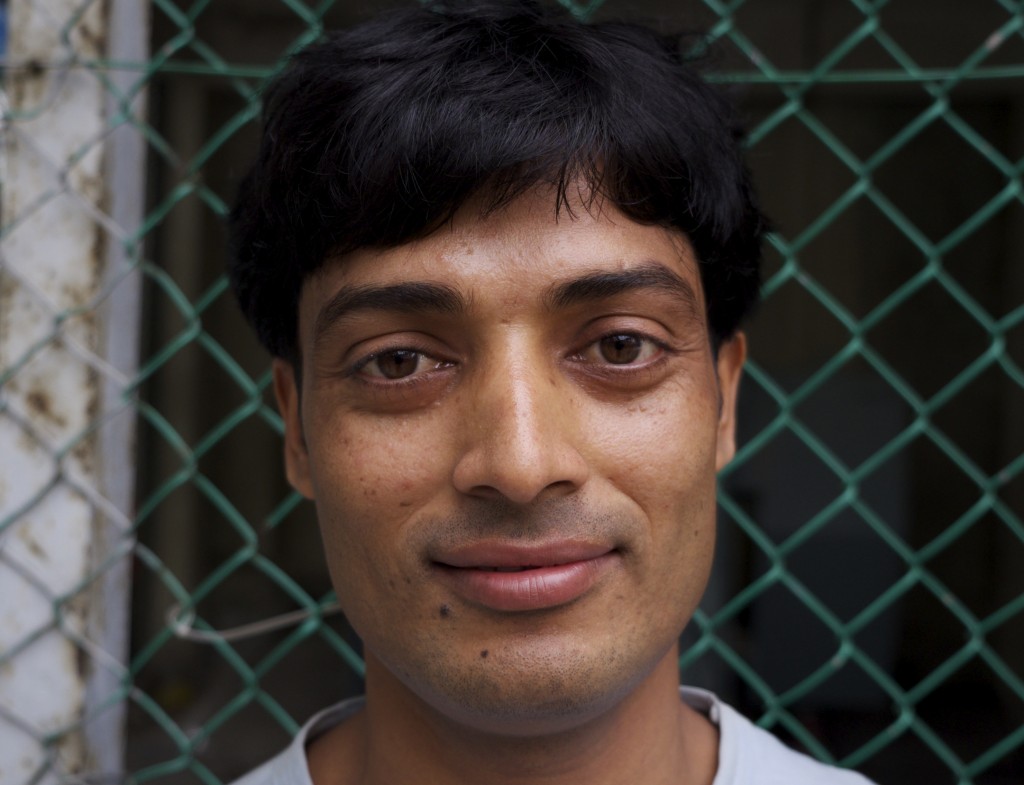

“My name is Karim Razaul. I from Bangladesh. I work in a construction company doing things like hacking – hard job, many hard jobs. Now, I working on a building at HarbourFront – a tall building, 11 blocks. I work in Singapore 1 year 3 months. I don’t know how long I want to work, maybe 10 years? If hard job, maybe work five years?Josephine Tan is a Year 2 Political Science and Psychology student currently on exchange at the University of Michigan. Along with Rachael Ng, a Year 4 Literature student, the photographer snapped pictures of migrant workers and their hands around Little India last year. The 21 year old tells us what inspired the pair to get hands-on with these photos.
Why did you choose to photograph migrant workers and their hands?
We were inspired by Humans of New York and wanted to showcase the individual; the migrant worker who might have a family, who is working hard for their loved one’s future. That’s why we focused on the face and the slight details of each migrant worker that makes him an individual. Ideally, we wanted to take photos of their work equipment as well, but this didn’t work out as we didn’t have the opportunity to. So we thought of taking photos of their hands–their blistered hands, some greasy and some even with paint on them. We thought that would be the best representation of their work here in Singapore.

“My name is Abdul Halim, from Bangladesh. I come here to earn money. I work in construction for big company. I do the signalling for cranes at the work site at Upper Thompson road. I came here for five years last time, then I go home, then now I come back again. Maybe will work five more years. Of course like working in Singapore, no choice, must earn money.”The first time we approached them was quite nerve-wrecking. We were just two students, with a camera and a phone, waiting around Little India, looking out of place, waiting for migrant workers to somehow magically appear. We did it in the afternoon too, so most of them were working. We were pretty nervous as we just walked up to them out of the blue to ask them for their photo. Some were pretty hesitant to let us take photos, as they were afraid they would be in trouble. What we found really helped was that we had the endorsement of Migrant Workers’ Centre (MWC), so when we gave them MWC flyers and told them that they could look to us for help, they were more open and receptive. Overall though, they were really pleasant to talk to. I was surprised by how insightful and even friendly many of them were–some even talked about personal stories of their family to us, who are total strangers. Honestly, I think that Singaporeans can be more like them, more friendly and open to people.


“I have two children and one beautiful wife. Only one ah! I don’t need other wife. The greatest achievement I have, is my children. The eldest is seven years old, and the smallest one is three years old. They are both girls. I work at shipyard, I do piping. Before I came from Middle East, I worked there for almost four years.”
What do you hope viewers will take away from looking at your photos?
I hope that people who do see my photos come away thinking of how we marginalise this group of people in society. I think we really need to have a serious conversation about migrant workers in Singapore–how they are viewed, how they are stereotyped as being ‘dirty’ and ‘unclean’. This conversation cannot just involve us students or even non-profit organisations like MWC, but needs to involve the migrant workers themselves. Only they know what it is like to be marginalised and how we as privileged members of society can help.

“My name Alamin. I work in Singapore three years at marine industry. I do welding in the shipyard. I don’t know how long I will work here, maybe 10 years? I send all money home to my family.”I believe it is very easy to just walk away ‘feeling good’ about ourselves. I do that too; I like to think that by volunteering at an organisation for one hour, I feel like a ‘better’ person. But we need to change and reevaluate our thinking. This is not about us, it’s about the people we are helping. After all, it is their right to feel integrated in society and to belong in our society. This is not my society, but our society.


“My name Abu Hanif. I come from Bangladesh. Actually my job I do safety supervisor, but I now do safety coordinator also. Now I supervising the TTP1 – Toa Payoh Terminal Phase 1. It will connect to Tuas Terminal. Before I working on the Toa Payoh tunnel. Before also, I working the condominium in Orchard. I working in Singapore 5 years 9 months. Casino and theatre I also do the roof sheet-making. I am Muslim. I don’t know how long I work – if Allah give permission, tomorrow I go back, today also can. I believe the Allah. Maybe 15, 20 years. I don’t know. Just the plan, after that Allah understand.”
Want to read more articles like this? This article first appeared in Issue 2 of AY2015/16. You can grab a copy right here on campus!


